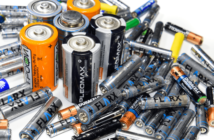Bill Joy co-founded Sun Microsystems, so he knows a thing or two about electronics and the internet. Therefore, when he discusses the internet of energy with the Institute of Electrical and Electronics Engineers, the industry should take notice. Bill has been focusing on climate change, desalination, and electric grid stability. He says each time this circles back to “cheap, safe, scalable, and reliable grid-scale energy storage.”

What the Internet of Energy Holds For Us
The internet of energy borrows the term from the internet of things, whereby technology is steadily joining up. The energy internet seeks to upgrade and automate energy structures along the same lines. The immediate goal is to produce energy cleanly and efficiently, and with as little waste as possible because this is critical.
China’s frequent energy shortages and crises are a striking example of energy waste. China may be one of the largest producers of renewable energy, yet it is still unable to sustain its population. Power outages and gaps plague the system. It does not even have sufficient charging stations for its electric vehicles. Clearly, its energy structures are neither fully automated, joined up or adequate.

The Future of Ultra-High Voltage Transmission
Ultra high voltage transmission allows rapid energy transmission over long distances. Therefore the internet of energy could benefit from using this technology. China is selectively introducing it and reports good progress. However, projects of this magnitude always circle back to batteries as Bill Joy says. Since energy storage is the fastest way to relieve temporary energy shortages.
Bill Joy has invested in a new company developing solid-state batteries using plastic electrolytes. His company Ionic Batteries believes these will lead to “a new generation of lighter, more powerful, non-flammable rechargeable devices.” Bill Joy told the IEEE the new battery could cost as little as $300 total per electric car. So we may be finally beginning to crack that nut.
Related
The Internet of Things Arrives in Batteries
Solid-State May Potentially Replace Lithium-Ion
Image Preview: Transmission Lines at Grand Coulee Dam, Washington




